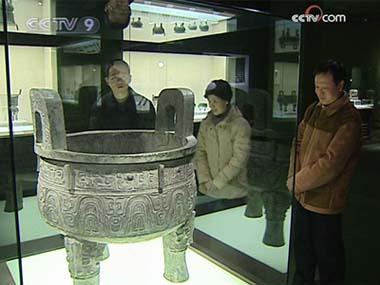Jokhong Temple and the Surrounding Area
The Jokhong Temple on Barhkor Street is in the center of Lhasa City, the capital of the Tibet Autonomous Region. The temple is said to have been built in the mid-seventh century by Princess Wencheng. Pilgrims still flock to the temple, and Barhkor Street has become a world-famous tourist and shopping street. In nearby alleys are located the Ramoche Temple, the nunnery and numerous traditional
The "Ghost City" of Fengdu
Mount Jiuhua, which lies in the southwest of Qingyang County in Anhui Province, and is noted for its towering peaks and great number of temples, is one of the four famous Buddhist mountains in China. It is a state-level key scenic area. In the early fifth century, Buddhism reached Mount Jiuhua. Since then, it has attracted an increasing number of pilgrims, monks and nuns. There are over 80
Mount Jiuhua
Mount Jiuhua, which lies in the southwest of Qingyang County in Anhui Province, and is noted for its towering peaks and great number of temples, is one of the four famous Buddhist mountains in China. It is a state-level key scenic area. In the early fifth century, Buddhism reached Mount Jiuhua. Since then, it has attracted an increasing number of pilgrims, monks and nuns. There are over 80
Mount Wutai
Mount Wutai, situated in the northeast of Wutai County of Shanxi Province, is one of China's four famous Buddhist mountains. Noted for its beautiful views, ancient pines and cypresses, "sea of clouds," and numerous halls, towers, terraces and temples, Mount Wutai is a major scenic area in China, occupying an important position in the history of Buddhism in China.
Mount Emei
Mount Emei, composed of the Da'e, Ere, San'e and Si'e mountains, lies in Emeishan City of Sichuan Province. Mount Emei is one of the four famous Buddhist mountains in China. Its major scenic spots include the BaoguoTemple, TigerTaming Temple, Thunder Sound Temple, Pure Sun Hall, Da'e Temple, Elephant-Bathing Pond and Gold Summit Peak. A grand pilgrimage is held on Mount Emei in April every
Mount Lushan
Mount Lushan lies south of Jiujiang City in Jiangxi Province, with an area of approximately 300 sq m. Greater Hanyang Peak, the summit, soars 1,474 m above sea level. Mount Lushan is famous for its imposing and graceful peaks, ever-changing "sea of clouds," springs and waterfalls, and historical sites. During the reign of Emperor Mingdi of the Eastern Han Dynasty, Mount Lushan became one of
Quanzhou-"World Museum of Religions"
Quanzhou, situated on the southeastern coast of Fujian Province, was an important harbor on the "Maritime Silk Road." In history, Buddhism, Christianity, Islam and Taoism were disseminated here. Therefore, Quanzhou is called the "world museum of religions." Major religious sites include the Statue of Immortality of the Clear Source Mountain, the Kaiyuan Monastery, the Pure and Clean Mosque, and
Mount Hengshan
Mount Hengshan, near Hengyang City in Hunan Province, has 72 lofty peaks and winds for 400 km through seven counties and cities. The summit, Zhurong Peak, is 1,290 m. above sea level. Mount Hengshan is famous for its scenery and places of historic interest, such as the Seven Ancestors Daochang (place where Taoist rites are performed), and the Zhuling Holy Spot. Many celebrities and scholars, such
Mount Wudang
Mount Wudang, located near Danjiangkou City in the northwest of Hubei Province, is one of China's state-level scenic spots. With 72 peaks standing in an area of over 30 sq km, it has dangerously steep cliffs and valleys, and beautiful views. The Heavenly Pillar Peak, its major peak, is 1,612 m. above sea level. The whole mountain route stretches for 60 km. Sacred to Taoism, Mount Wudang has 36
Shaolin Monastery
The Shaolin Monastery lies below Wuru Peak at the northern foot of Shaoshi Hill of Mount Songshan in Henan Province. It was built in the 19th year (495) of the Taihe reign period of the Northern Wei Dynasty. The monastery is where the Chan (Zen) sect of Chinese Buddhism originated. The monks of the monastery rendered outstanding service in helping Emperor Taizong to found the Tang Dynasty, and
Total: 50 Items This is 5 Page( 10 Items/Page) Result Page: 5 Pages First Previous Next LastArt
 more
moreObama administration vows to break

Irving dual-language students
Melissa Reyna (center) and Johanna Sanchez

Dev, Denny to quizz for charity
Director Danny Boyle (R) holds his Oscar for

Beijing, Taipei team up for
The Palace Museum in Beijing and the Palace

Custom
 more
moreProvinces Site
Chinese Medicine
 more
more
















